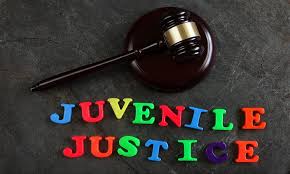Understanding Juvenile Law: The Laws of the Good Child and the Shadows of the “Dead Mansion”
Introduction
Juvenile law plays a vital role in shaping the future of young individuals, focusing on rehabilitation rather than punishment. In various countries, the legal system establishes separate guidelines—often referred to as the “Laws of the Good Child”—to protect minors and guide them toward responsible adulthood. Occasionally, stories like “Dead Mansion,” whether fictional or real, emerge as metaphors for neglected or failed systems, where young lives fall through the cracks. This article explores how juvenile law works, the principles behind child welfare laws, and how symbolic references like “Dead Mansion” highlight the consequences of a broken system.
What Is Juvenile Law?
Juvenile law refers to the legal framework that governs the treatment of minors—typically individuals under the age of 18—who are accused of committing crimes or are in need of care and protection. Unlike adult criminal systems, juvenile justice systems prioritize education, correction, and social reintegration. Laws in this area aim to recognize the developmental differences between youth and adults, promoting the idea that children are capable of change and deserve a second chance.
The Laws of the Good Child: Protecting and Guiding Youth
The “Laws of the Good Child” is a conceptual phrase used to describe the values and legal principles that focus on the well-being, moral development, and safety of minors. These laws often include provisions for:
-
Mandatory education
-
Protection from abuse and neglect
-
Access to basic needs such as shelter, healthcare, and counseling
-
Prevention of exploitation in labor or trafficking
These laws are intended not only to protect children but also to hold families, schools, and society accountable for the healthy upbringing of the next generation. Countries with strong child welfare systems ensure that juvenile laws are designed to support rather than criminalize youth behavior.
The Symbolism of the “Dead Mansion”
The term “Dead Mansion” can serve as a haunting metaphor for what happens when the system fails to support vulnerable children. It symbolizes institutions or homes that were once meant to nurture and protect but have instead become places of abandonment, fear, or abuse. In real-world contexts, this may point to orphanages, juvenile detention centers, or neglected homes where children fall victim to systemic neglect or injustice.
Stories that use this kind of symbolism often aim to raise awareness of the gaps in legal and social structures. They remind us that without proactive juvenile law and vigilant community care, young lives can be lost to environments that stifle growth and breed delinquency.
Rehabilitation Over Punishment
Modern juvenile justice systems emphasize rehabilitation. Courts often offer alternatives to incarceration, such as counseling, community service, or restorative justice programs. These approaches seek to understand the root causes of a child’s behavior and provide support systems to help them reintegrate into society as responsible individuals. This philosophy reflects the core idea behind juvenile law—that young people deserve guidance, not just judgment.
Conclusion
Juvenile law, grounded in the principles of the “Laws of the Good Child,” is essential to protecting and guiding the youth of society. While the idea of the “Dead Mansion” serves as a stark warning of systemic failure, it also reinforces the need for stronger laws, vigilant institutions, and compassionate communities. When upheld correctly, juvenile law can transform lives, turning potential tragedies into stories of hope, growth, and redemption.




